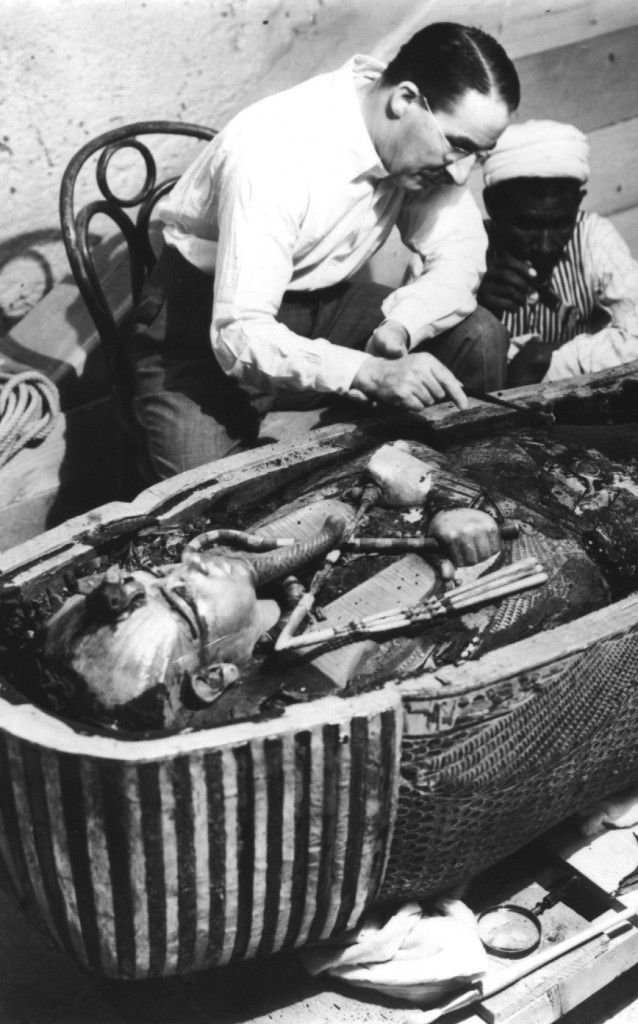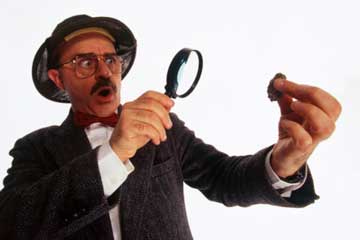After reading my colleagues’ discussions of Indiana Jones and the Titanic, I thought it might be appropriate to write about the romance of archaeology in popular culture, particularly in regard to notions of heroism:

Howard Carter inspecting King Tut with an unnamed colleague (Source: Teresa Wilde's Demon of the Week)
Like Indiana Jones, many of the most famous archaeological sites are characterized by a monolithic researcher, converting the archaeologist as a singular researcher into an archetype, a singularity. Tutankhamun’s tomb had Howard Carter; Olduvai Gorge had the Leakys; and Egyptology (until the Mubarak debacle, at least) had Zahi Hawass. The archaeologist as archetype is considered the supreme authority in their area of expertise, which permits them the authorship to unveil treasures and past events (another equally valuable of capital, one might argue) as yet another flourish to their legacy. We have already discussed the rhetoric of “discovery”, “seeking out”, “treasure-hunting”, and “revealing”, and I think it is telling that a single figure is often set at the head of these efforts. Recalling classical anthropology’s embedded militancy metaphors, the archaeologist becomes analogous to a war hero, or even a crusader, preserving and protecting and elevating a sacred property so that it does not fall victim to the ravages (or “savages”) of time.
We have discussed the difficulty of simply supplanting these dominant metaphors with our own “more appropriate” tropes; what sort of altered hero narrative do you think would be more befitting community archaeology (a priest, spreading a doctrine for the benefit of their parish to inspire them to good works?), or public archaeology (a wandering bard, like Homer or Johnny Appleseed?), or any other archaeological variants we have studied? Do we need a hero narrative at all– or rather, why do you think it is there in the first place?

Alternatively, if you search "archaeologist" in Google Images, the results are-- more often than not-- a far cry from "heroic". (Source: How Stuff Works)
Image sources:
Howard Carter and an unnamed colleague. Teresa Wilde’s Demon of the Week Blog.
Alternatively, if you search… How Stuff Works.


